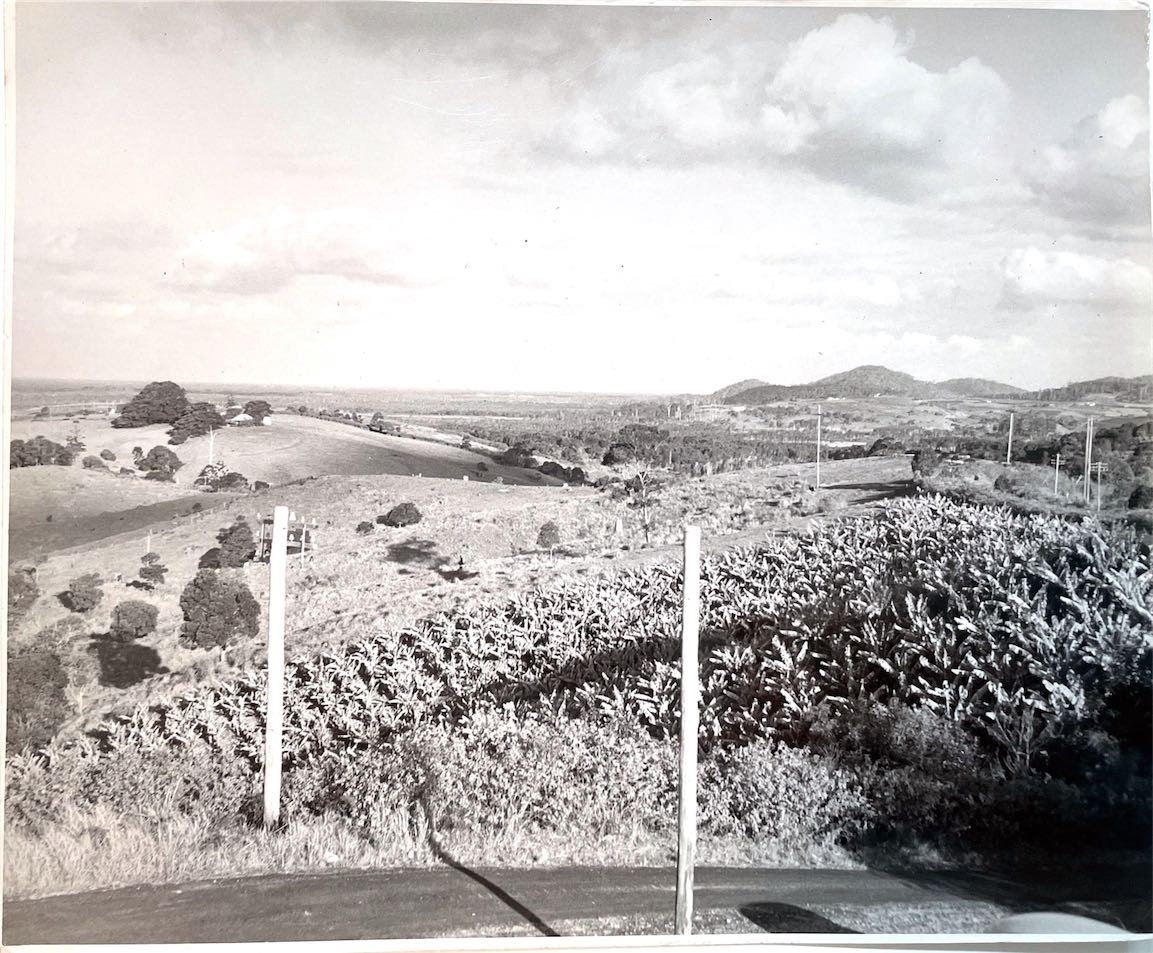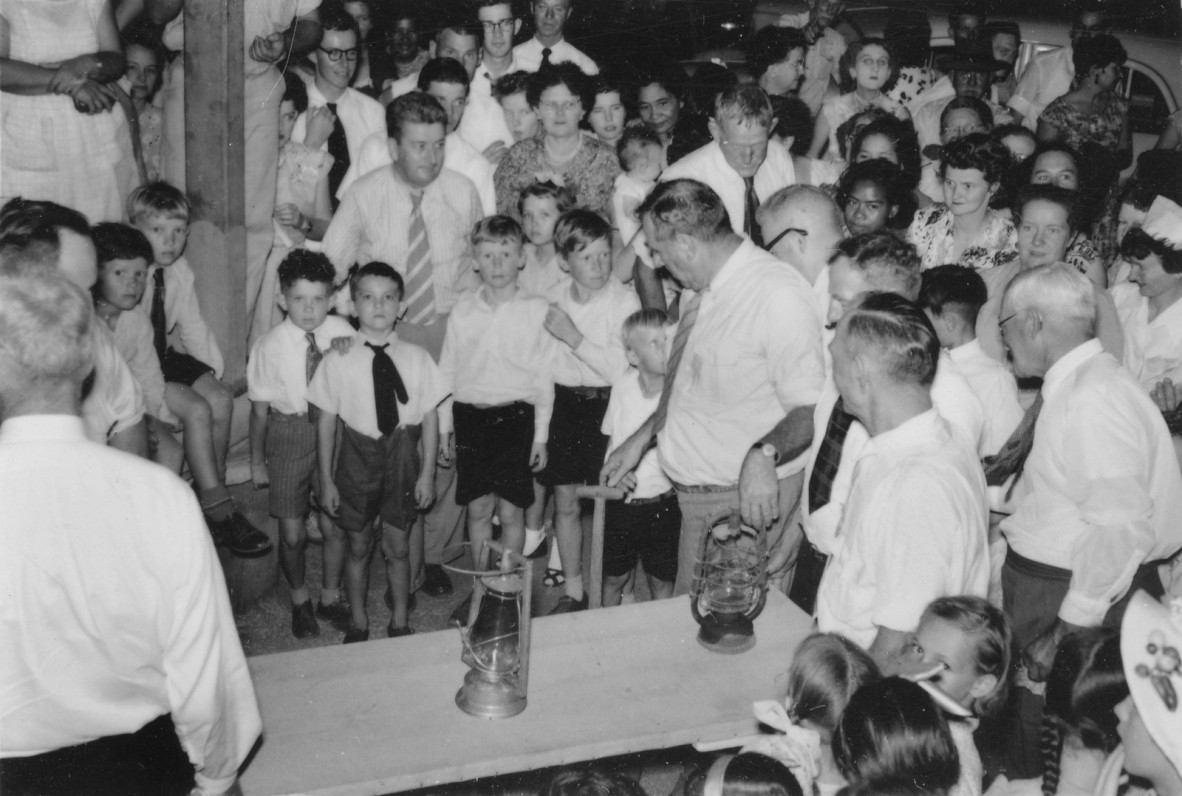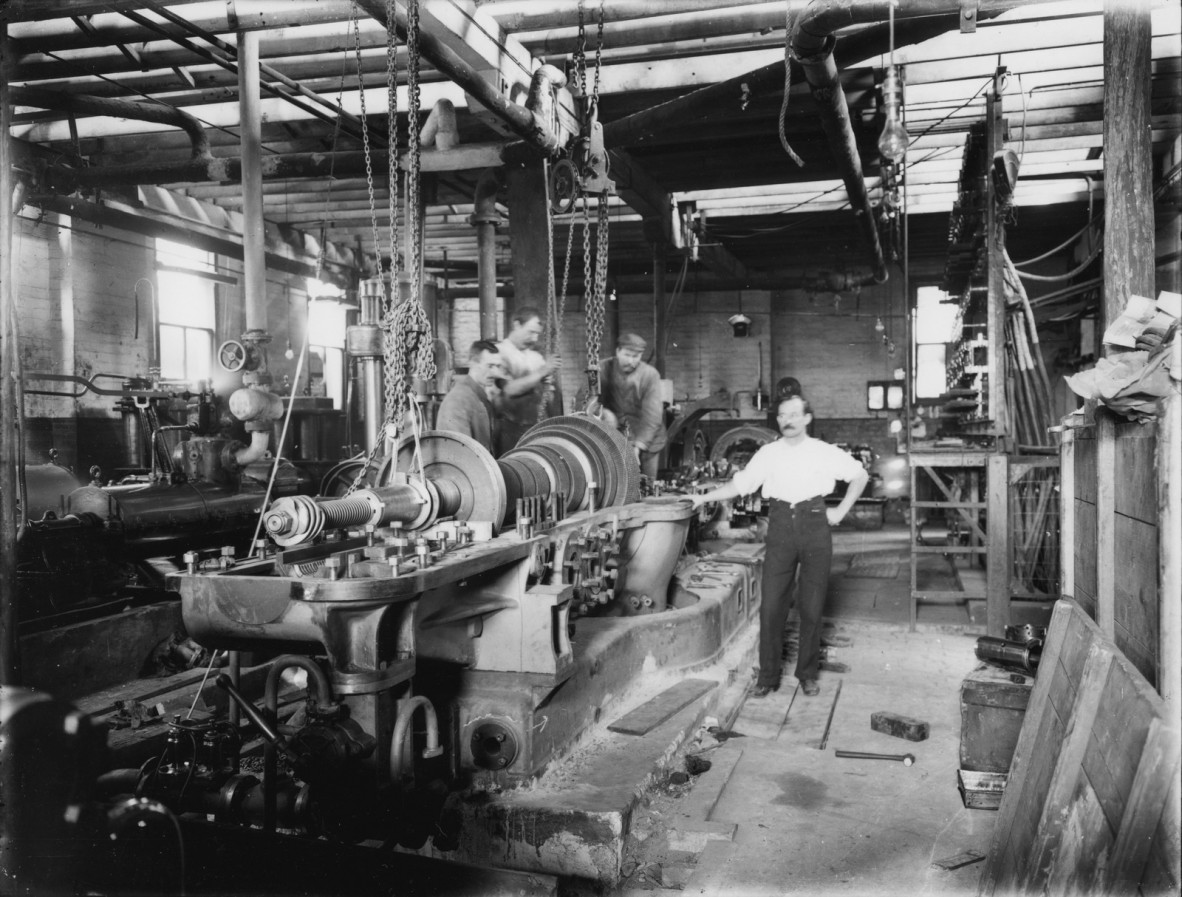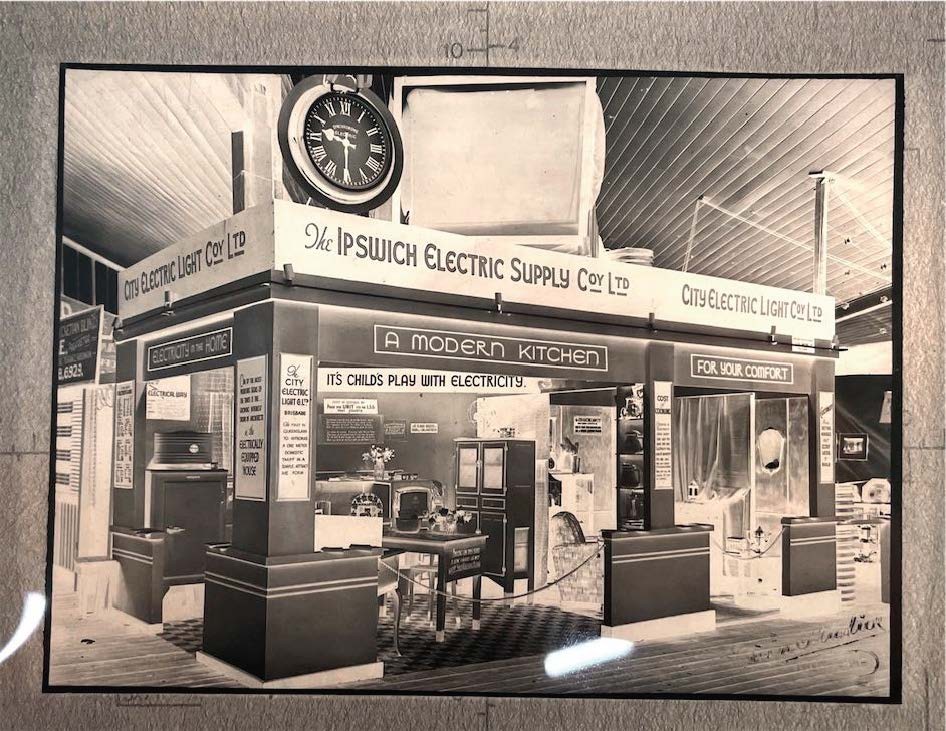Researching the history of electricity in the State Library collections
By Dr Henry Reese, 2021 John Oxley Library fellow | 31 March 2022
This blog was written by 2021 John Oxley Library Fellow Dr Henry Reese as part of his research into the history of electricity in Queensland.
I’m Henry Reese and I’m the 2021 John Oxley Library Research Fellow at the State Library of Queensland. I’m a historian, which means that I’m a professional nerd. I’m very fortunate that I get to research and teach history for a living and I’m delighted to have the opportunity to immerse myself in the State Library collections. My project, ‘Electrifying Queensland: Modern Machines in the Sunshine State,’ looks into the history of electricity in Queensland in the late nineteenth and early twentieth centuries.

Electricity supply transforms the environment: power poles snake across the Queensland landscape. This image shows power lines near a banana plantation in the Tweed region, c.1940s. Source: Queensland Energy Museum Collection, MS 29572.
Why is the history of electricity important? Electricity was not a neutral source of energy in the past: it was a cultural phenomenon. It was something that provoked great enthusiasm, excitement, optimism and fear. We might take it for granted today, but once upon a time, this everyday technology was brand new. It was electrifying. It got people thinking. And topics like this are exciting for historians like me because they provide us with an opportunity to explore how everyday people understood their worlds, with all their complexities and contradictions laid bare.
The decades from the 1880s to the 1930s were a time of enormous social, cultural and economic change in settler-colonial Australia. Technological change was a topic that was on everyone’s lips. The world was becoming increasingly interconnected through telegraph wires, steamships, railways and the relentless expansion of colonial empires. These were transformations that happened at granular, local levels, and globally unfolded in the pages of newspapers and magazines. New forms of entertainment, transportation and communication such as the telephone, gramophone, cinema and automobile were revolutionising human experiences of time and space. Queenslanders understood themselves to be ‘modern,’ and imagined that they were participating in the rich drama of these global modern processes.

Children gathered to celebrate the switching on of electricity in Normanton, north Queensland, ca. 1955, 7665 Normanton and Karumba Slides and Photographs. John Oxley Library, State Library of Queensland. Negative number: 199761
I want to find out what electricity meant to different Queenslanders. How did it feel to first see an electric light on the streets of your town, or boil a kettle, or listen to the radio? How did electrical machinery change patterns of work and leisure, in the factory and the home? How did the expansion of a tangled grid of poles and wires slowly transform the landscape? These aren’t easy questions to answer, and it takes a lot of digging in the State Library collections to find clues.
There’s no better time for us to think seriously about Australian society’s relationship with electricity. The impacts of extreme weather caused by anthropogenic climate change are perhaps the most vivid reminder that the way societies create, store, distribute and use energy can have an enormous impact on the planet as a whole. Our consumption of electricity is one of the major drivers of climate change.
The modern world has been profoundly shaped by fossil fuel usage. The enormous economic, social and political transformations set in train during Industrial Revolution depended on unleashing massive amounts of energy from hydrocarbon deposits. By 1890, coal had overtaken biomass to become the world’s no.1 source of energy. Oil overtook coal around 1965, with natural gas also becoming important in recent years. Post-European invasion, colonial Australia was an early participant in these economic and social transformations.

Workers at the Electric Light Co., Brisbane, ca. 1910, John Oxley Library, State Library of Queensland. Negative number: 39185
We’re still living in the age of hydrocarbons. Today, Australians have a huge energy footprint. We’re currently one of the world’s largest per capita users of electricity. In 2020, Australia generated nearly 10,000 kilowatt hours of electricity per person, while the global average is about one third of this. Most of our electricity needs come from burning fossil fuels. In 2021, over three quarters of Australia’s electricity came from coal and gas, with a quarter coming from renewable energy. Electricity and heat production are by far the largest sources of global emissions, followed by transport, manufacturing and construction (especially cement) and agriculture.
Given the importance of electricity in our global energy mix, it’s important that we understand where it comes from, how societies used and use it, and what its future might be. We often take electricity for granted, but it has a surprising and often fascinating story. It has a history. That is to say, it meant different things to different people at different times. And there’s perhaps no better time to think historically about electricity. The world is on the cusp of perhaps the most dramatic energy transition since the industrial revolution. Scientists and entrepreneurs tell us that decarbonisation in the future will require a rapid push to ‘electrify everything’ using renewable sources [2]. Just like the Queenslanders of the Federation era, we are living through a time period of extraordinary change. Perhaps we can learn something from exploring how a past society adapted to a new energy order.
So far I’ve found some intriguing sources, and I’m looking forward to introducing you to more of them in my coming blog posts and podcast.
For example:
- Did you know that some of the pioneers of electricity generation in Queensland were also showmen who took to the stage and thrilled audiences with wondrous electrical trickery?
- That in the 1930s, the Brisbane City Council produced a glossy modernist magazine to try and encourage Brisbane housewives to take up electricity in the home?
- That electricity workers and linemen once referred to themselves as ‘knights of the spur?’
- And that Queensland’s electricity industry was in such disorder and so far behind the rest of the country that a Royal Commission was called in the mid-1930s to try and sort out the situation?
I’m looking forward to telling you more about these things and many more soon.

The Ipswich Electric Supply Co. displays a 'modern kitchen' at the RNA show, 1938. Source: Queensland Energy Museum Collection, MS 29572.
References
- J.R. McNeill and Peter Engelke, The Great Acceleration: An Environmental History of the Anthropocene since 1945 (Cambridge, MA & London: Belknap Press, 2016), Ch.1
- Saul Griffith, The Big Switch: Australia’s Electric Future (Melbourne: Black Inc., 2022).
-
Andreas Malm, Fossil Capital: The Rise of Steam Power and the Roots of Global Warming (London: Verso, 2016); On Barak, Powering Empire: How Coal Made the Middle East and Sparked Global Carbonization (Oakland, CA: University of California Press, 2020); Vaclav Smil, Energy and Civilization: A History (Cambridge, MA & London: MIT Press, 2017).
Related Blogs
Comments
Your email address will not be published.
We welcome relevant, respectful comments.